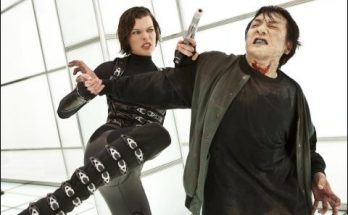“I’m told that I’m very photogenic.” — Elizabeth Short
Ellroy best describes the dark side of Los Angeles as “crime and sex and outré pathology.” To capture that look for The Black Dahlia, in April 2005, the production team traveled to Sofia, Bulgaria, to re-create Hollywood of 1947. Linson shares, “It was great to have a production crew who maintains the control of duplicating Hollywood. You actually see the Hollywood Hills, but they’re really the hills of Sofia.”
Production designer Ferretti built Hollywood and streets infamous during the Zoot Suit Riots in the Lic Pier/Venice area…locations that no longer exist in L.A. The director adds that he wasn’t concerned about shooting in a location so far from the real Los Angeles, noting, “Much like Scarface, for which we only shot two weeks in Miami, you will never have a sense that you are not in L.A.”
In the book, Lee Blanchard disappears for a time in Mexico, much to the chagrin of Kay and his partner, Bucky. To handle that additional challenge, but still keep elements of the story in play, De Palma brought Lee’s disappearance back to Los Angeles, the city he was re-creating deep within Europe.
The production would actually wrap by shooting key sequences in Los Angeles. During June 2005, the team would film across sections of the city to get just the right look for the backdrops, capturing images indigenous only to L.A. Finally, the production headed to City Hall on Spring Street in downtown Los Angeles to film sequences of the two detectives while they battle with the LAPD to stay on the case. There they would conclude principal photography.
To dress the cast in period fashions, costume designer Jenny Beavan would bring in costumes from London to Bulgaria—specifically, multiple outfits for Swank, Johansson and Kirshner. Beavan succinctly states of the women who wore the fashions of the period, “They defined glamour…even when their lipstick was smeared.”
The director celebrates that his leading ladies were reminiscent of the glamorous era. “Scarlett, Mia and Hilary are dressed to the nines and made up to be as seductive as possible,” De Palma says. “They’re dressed (and photographed) beautifully. You’re defenseless against them.”
Silk flowers, black satin dresses and torn stockings were Beavan’s costumes of choice for the Dahlia. Quite the clotheshorse, Kirshner is known for her love of French clothing from Louboutin to Lanvin.
Johansson found that Kay Lake was indeed a woman with a collection of beautiful clothing. Commenting on her short-sleeve sweater sets, pearls and antique hairpins, she laughs, “How can you not feel like a sexy dish in that?” Specifically, when Bucky comes home to Kay, she opens the door like an angel in white—cut against the disparity of the Dahlia’s black-stained body on the ground with a menacing crow, attacked in death as she was in life.
The men would not be left out. With their wide ties, double-breasted suits and Miller Raider-style teardrop hats, Eckhart and Hartnett were the height of period fashion…even for underpaid flatfoots. Director De Palma adds, “It’s what I loved about The Untouchables. The suits, the hats, the cars and language…everything was so stylized.”
Next Page: Evocative Creations of Composer
Views: 41



